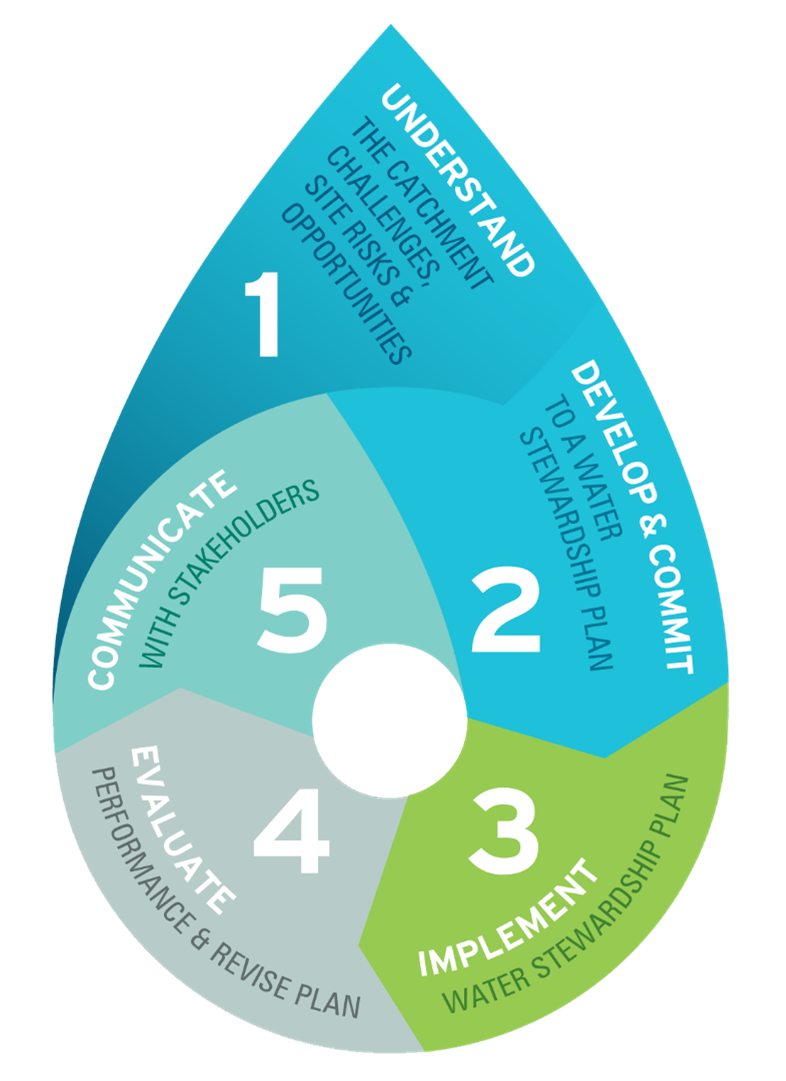Water Stewardship enables water users —governments, business and communities— to work together to identify and address water challenges.
What is Water Stewardship?
We define Water Stewardship as the use of water that is socially and culturally equitable, environmentally sustainable and economically beneficial, achieved through a stakeholder-inclusive process that includes both site- and catchment-based actions.

Our approach to Water Stewardship
Any organisation can use the Water Stewardship framework to improve water management. The 5-step process keeps efforts manageable and allows impacts to be traced back to actions.
The steps guide organisations to:
- Understand your water use, risks, impacts, and opportunities at a site and local catchment-level.
- Develop and commit to a water stewardship plan, prioritising targets, with actions and responsibilities for improved water management and outcomes.
- Implement your plan and improve your water impacts.
- Evaluate your actions and revise your plan for continuous improvement.
- Communicate your water actions responsibly and transparently and collaborate stakeholders.

Together, these steps and actions work to deliver sustainable water outcomes at a site and catchment level:

The Water Stewardship framework is laid out in the International Water Stewardship Standard. The Standard and Guidance is available for download.

